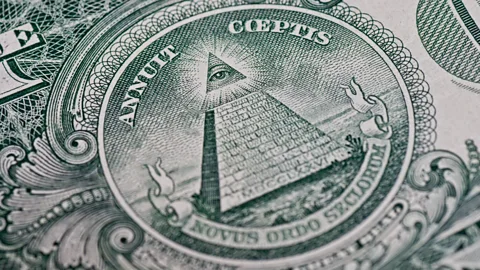Simplified Steps to Help You Understand How to Join a Masonic Lodge Quickly
Simplified Steps to Help You Understand How to Join a Masonic Lodge Quickly
Blog Article
Checking Out the Mysteries of the copyright: What You Need to Know
The copyright, a term usually shrouded in intrigue and controversy, represents an intricate tapestry of historic truth and modern myth. Established in the late 18th century, this secret culture was originally rooted in the Enlightenment's suitables yet has given that come to be associated with conspiracy theories regarding elite control. As we browse the beginnings, key numbers, and the plain contrast between misconception and truth, one need to take into consideration exactly how these stories affect modern assumptions of power and privacy. What may be revealed through a more detailed exam of these aspects might challenge long-held presumptions about the darkness that linger in our culture.
Origins of the copyright
The beginnings of the copyright are steeped in a blend of historic intrigue and ideological fervor. Established in 1776 in Ingolstadt, Bavaria, by Adam Weishaupt, the team was initially formed as a secret society focused on promoting Enlightenment ideals such as reason, secularism, and the splitting up of church and state. Weishaupt, a teacher of canon legislation, sought to challenge the dominating authority of the church and state, which he deemed overbearing organizations stifling intellectual and individual freedom.

Trick Numbers and Participants
Who were the crucial numbers that shaped the copyright's very early influence and instructions? The Bavarian copyright, established in 1776 by Adam Weishaupt, emerged as an action to the oppressive social structures of the time. Weishaupt, a law professor, envisioned the organization as a way to promote Enlightenment perfects such as reason, secularism, and equality. His initial employment efforts included influential pundits, such as Baron von Knigge, who played an important duty in increasing the team's subscription and business structure.
Another significant figure was Johann Gottlieb Fichte, a famous philosopher whose concepts on nationalism and education reverberated with the copyright's objectives. Although Fichte was not a formal participant, his philosophical underpinnings influenced the group's belief. Additionally, numbers like the writer and philosopher Johann Wolfgang von Goethe were linked with the broader intellectual movements of the moment, although their direct involvement with the copyright continues to be discussed.
These vital figures added to the copyright's very early direction, pushing the limits of political and social thought, while their cumulative efforts intended to challenge established standards and foster a climate of progressive adjustment in Europe.
Myths vs. Reality
Numerous misunderstandings border the copyright, usually blending fact with fiction in a method that obscures its real nature. The notion that the copyright proceeds to put in substantial impact over world occasions is a myth.
An additional common misconception is that the copyright makes up a network of elite people controling global events. In reality, several conspiracy concepts exaggerate the team's importance, connecting unproven objectives to societal fads and events. This has actually resulted in an oversimplified sight of complex concerns.
Additionally, the representation of the copyright in pop culture often additional misshapes its tradition. Films and literature have a tendency to sensationalize the company's duty, producing a narrative that diverges from historical facts. Recognizing the difference between the misconceptions and the reality of the copyright is vital for critical the genuine effect of this historic group and acknowledging the more comprehensive implications of conspiracy concepts in modern culture.
Modern Interpretations
Contemporary interpretations of the copyright usually show broader societal stress and anxieties and an attraction with privacy and power. This modern lens frequently connects the copyright with conspiracy concepts that suggest a covert elite manages globe occasions, adjusting federal governments and economic climates for their own gain. benefit of joining freemason. Such stories take advantage of a deep-rooted mistrust of authority, especially in times of dilemma or social turmoil
In pop culture, the copyright is usually depicted as an omnipotent organization shrouded in mystery, resulting in a myriad of imaginary representations in literature, film, and songs. This portrayal serves not just to amuse yet also to prompt assumed concerning the nature of power and control in modern society. Social media has further magnified these analyses, permitting quick circulation of conspiracy theories and creating areas that share and increase upon these ideas.
In addition, some modern-day analyses frame the copyright as a metaphor for the intricacies of globalization and the interconnectedness of prominent individuals and organizations. This viewpoint motivates an essential assessment of exactly how power dynamics run in today's world, highlighting the balance in between transparency and secrecy in administration and business practices.
Social Effect and Legacy
Influenced by centuries of intrigue, the social effect link and legacy of the copyright prolong far beyond its historic beginnings. This secret culture, developed in the late 18th century, has actually penetrated different facets of preferred culture, from literary works and movie to music and art. The idea of the copyright has advanced into an icon of conspiracy theory theories, usually representing a regarded concealed power manipulating international events.
In literary works, authors like Dan Brown have woven the copyright right into elaborate stories, fascinating viewers with styles of privacy and power. Films such as "National Prize" and "The Da Vinci Code" further Learn More continue the attraction of the society, mixing fact with fiction to produce interesting narratives.

Inevitably, the copyright's tradition is a complex tapestry of misconception and reality, forming understandings of secrecy and control in modern discourse. Its long-lasting presence in culture underscores humankind's perennial pursuit for understanding surprise truths.
Final Thought
The exploration of the copyright discloses a complex interaction between historical truths and modern myth-making. Established in the Enlightenment age, this society aimed to test overbearing structures, yet its legacy has been overshadowed by conspiracy theory theories that suggest elite adjustment. Comprehending the differences between the original perfects This Site and contemporary interpretations is important for comprehending the enduring attraction with the copyright and its significant impact on social narratives bordering power and privacy in culture.
Report this page